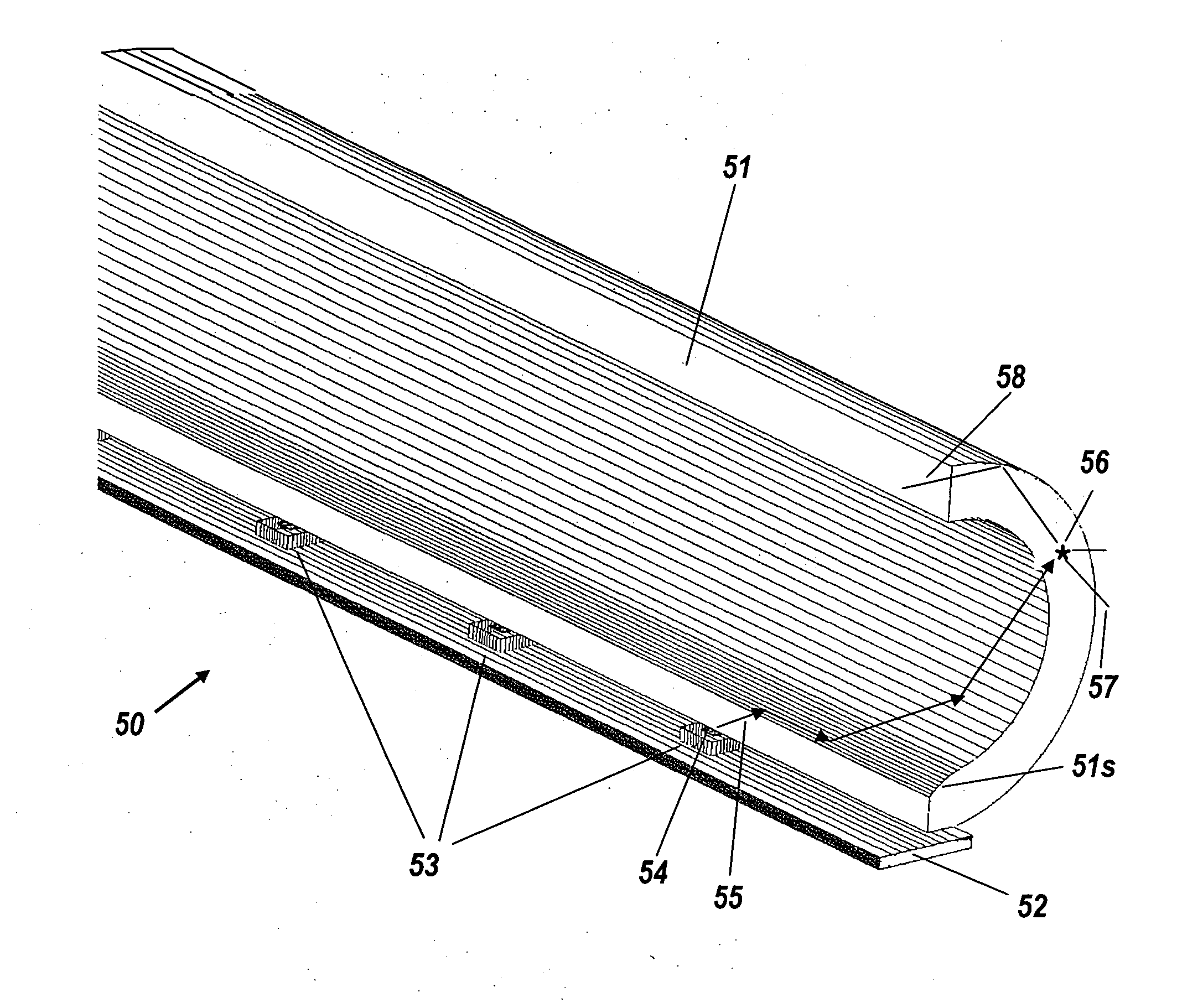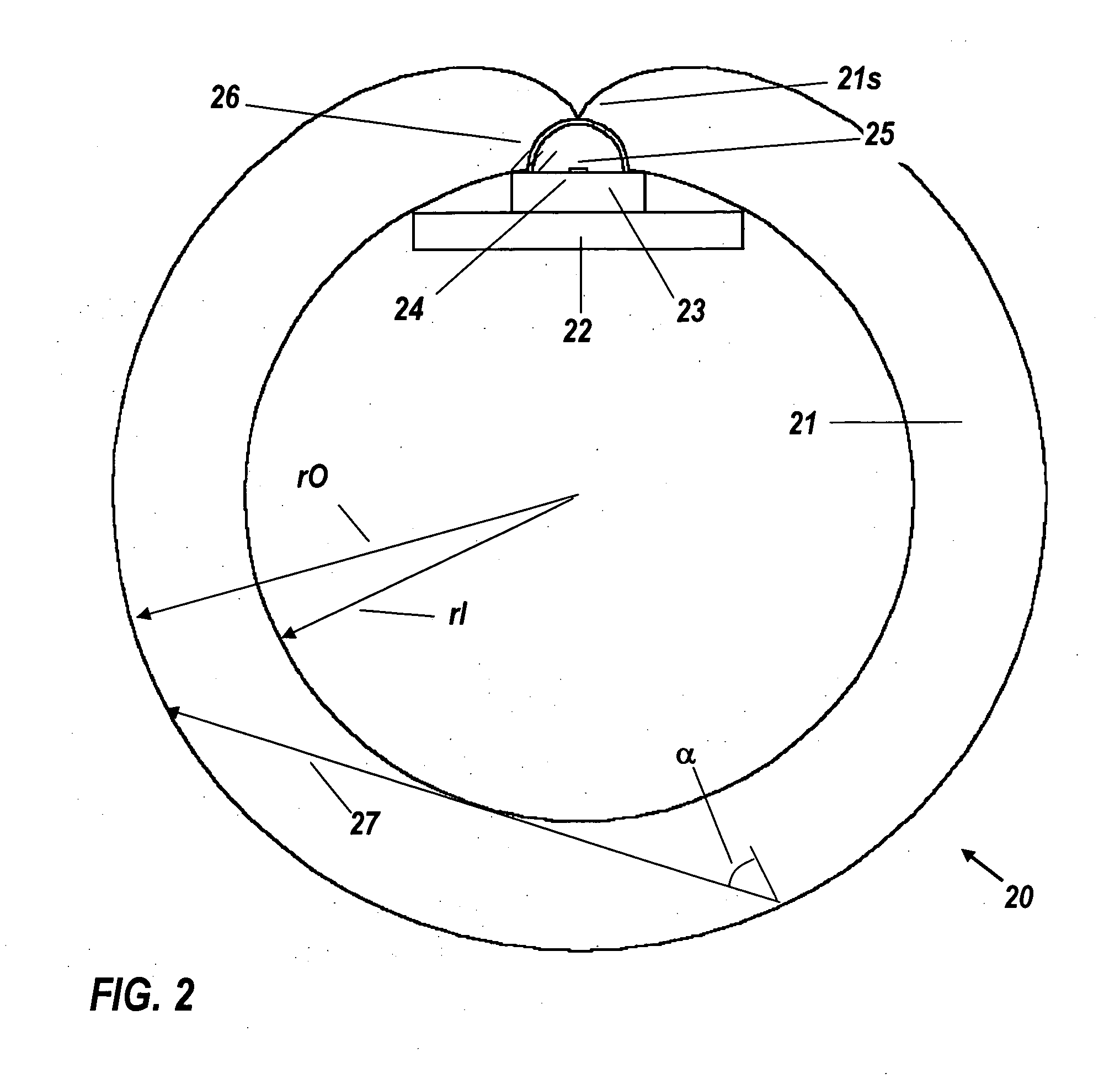Neon-tube substitute using light-emitting diodes
- Summary
- Abstract
- Description
- Claims
- Application Information
AI Technical Summary
Benefits of technology
Problems solved by technology
Method used
Image
Examples
Embodiment Construction
[0030]Corresponding reference characters indicate corresponding components throughout the several views of the drawings.
[0031]FIG. 1 shows a cross-section of and embodiment of a tubular luminaire indicated generally by the reference numeral 10. Luminaire 10 comprises transparent hollow tube 11, circuit board 12, LED package 13, LED emitter chip 14, and transparent LED dome 15. Transparent hollow tube 11 comprises circular groove 16 surrounding dome 15, and injector section 17, bounded by upper spiral surface 17s and a lower flat surface 17f. Also shown are some exemplary light rays emitted from the edge of chip 14. All light from chip 14 remains trapped within the wall of tube 11 by total internal reflection, until scattered out by either or both of two mechanisms, weak volume scattering or graded surface scattering. Light from the LEDs undergoes a high number of reflections per average path length. When using surface scattering for ejection, more reflections mean scattering sooner,...
PUM
 Login to View More
Login to View More Abstract
Description
Claims
Application Information
 Login to View More
Login to View More - R&D
- Intellectual Property
- Life Sciences
- Materials
- Tech Scout
- Unparalleled Data Quality
- Higher Quality Content
- 60% Fewer Hallucinations
Browse by: Latest US Patents, China's latest patents, Technical Efficacy Thesaurus, Application Domain, Technology Topic, Popular Technical Reports.
© 2025 PatSnap. All rights reserved.Legal|Privacy policy|Modern Slavery Act Transparency Statement|Sitemap|About US| Contact US: help@patsnap.com



